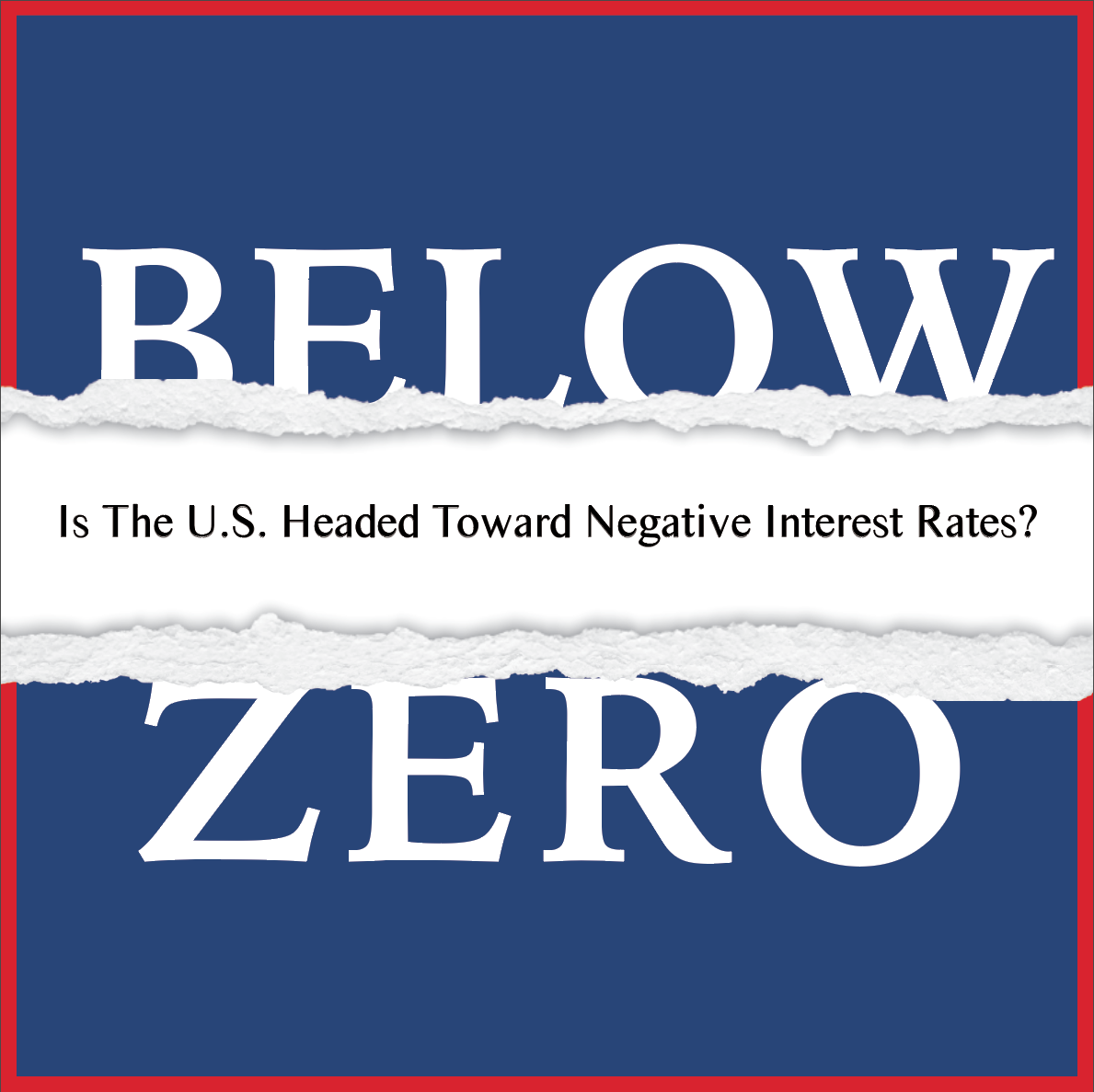Below Zero: Is the U.S. Headed Toward Negative Rates?
President Trump tweeted in September of 2019 that the Federal Reserve should push interest rates down to zero in hopes of stimulating the economy. With political pressure from the executive branch to significantly drop rates and concerns over slow global economic growth, the Fed, for the first time since the Great Recession, cut rates three times in 2019 totaling 75 basis points (FRED, 2020). Central banks in Denmark, Switzerland, Japan, Sweden, and the Eurozone have already introduced negative rates in efforts to increase inflation and spur stagnant growth. With the even slower global economic growth on rise with the spread of the Coronavirus, uncertainty in trade relations, and Trump’s short-term benefits from 2017’s tax cuts fading, is the U.S. headed for negative rates?
What does a negative interest rate even mean?
When you go to the bank and deposit money into your savings account, the bank offers you a small interest rate for holding your money with them. Why you might ask? You see, banks have something called a reserve requirement that requires private banks to hold a certain amount of cash (usually around 10%) they receive from depositors on hand. This allows banks to make loans to borrowers while also ensuring that they can meet their daily demand for cash withdrawals. On the other hand, commercial banks also usually earn interest on the extra reserves they keep with a country’s central bank, like the Federal Reserve in the United States. However, negative interest rates force commercial banks to pay to keep money in those accounts. The reason for doing this is commercial banks will be incentivized to lend money to borrowers so that they don’t have to lose money from paying the interest rate on the reserves they hold. In turn, banks will make more loans circulating more money throughout the economy in hopes of spurring economic growth and increasing inflation.
Why negative rates now?
The immediate catalyst for moving towards negative interest rates in the U.S. is likely rooted in recent trade tensions with China which have left investors worried about the perceived safety of U.S. government securities. This cause for concern brought on by trade tensions has also been pushed by longer-term trends as the U.S. enters its longest economic expansion in history. While steady, the truth is U.S. economic growth has been somewhat lackluster. Peter Conti-Brown, a professor of legal studies and business ethics at Wharton, blames slowing growth on “secular stagnation.” Secular stagnation is “a prolonged period in which satisfactory growth can only be achieved by unsustainable financial conditions” (Knowledge@Wharton, 2019). Lisa Cook, a professor of Economics and International Relations at Michigan State University, also noted the U.S. has an aging population that is leaving the workforce. With an increase in the population’s percentage of retirees, more and more of the population will depend on their savings. With negative interest rates potentially looming over the U.S. economy, this could have serious consequences for our aging population.
Do negative rates work?
Today, over $17 trillion, or roughly a third of bonds in the world are trading at a negative yield. However, the overwhelming majority of that debt has been issued in Europe and Japan. The question is, is it working? The answer is not so clear as the policies of negative interest rates throughout the world have produced mixed results. On one hand, the European Central Bank (2019) recently reported that negative interest rates have actually increased lending. Yet, European critics’ concerns of massive cash hoarding brought on by negative rates have yet to materialize. On the other hand, in Japan negative interest rates have shown less success. The Federal Reserve Bank of San Francisco (2019) published research that actually found Japan is showing increasingly lower inflation expectations despite their expansionary monetary policies of negative rates in efforts to spur more inflation.
Is the US next?
Despite pressures from President Trump, negative rates are unlikely to hit the U.S. market at least in the short-term. The truth is there are real economic differences that prevail between the economies of the United States, Japan, and the Eurozone. Japan has fallen into recession again and has experienced overall very slow growth for decades now and the Eurozone has also experienced disappointing growth numbers. Yet, long-term the story is a bit different. The concern over negative interest rates will continue to make headlines. Long-running trends from an aging demographic and changes in the behavior of savers, have depressed the level of interest rates that central banks can maintain without curbing growth. This leaves policymakers at the Fed with less room to stimulate the economy via their most effective means- monetary policy. With so much uncertainty around the effectiveness of negative interest rates, only time will tell.
Sources
Business Radio. “Are Negative Interest Rates on the Way in the U.S.?” Knowledge@Wharton, 17 Sept. 2019, knowledge.wharton.upenn.edu/article/negative-interest-rates-way/.
Christensen, Jens, and Mark Spiegel. “Negative Interest Rates and Inflation Expectations in Japan.” Federal Reserve Bank of San Francisco, 26 Aug. 2019, www.frbsf.org/economic-research/publications/economic-letter/2019/august/negative-interest-rates-inflation-expectations-japan/.
Demiralp, Selva, et al. “European Central Bank Working Paper Series.” European Central Bank , May 2019.
“Open Market Operations.” Board of Governors of the Federal Reserve System, 2019, www.federalreserve.gov/monetarypolicy/openmarket.htm.
Trump, Donald J. “Donald Trump Tweet .” Twitter, Twitter, 11 Sept. 2019, twitter.com/realDonaldTrump/status/1171735691769929728.

